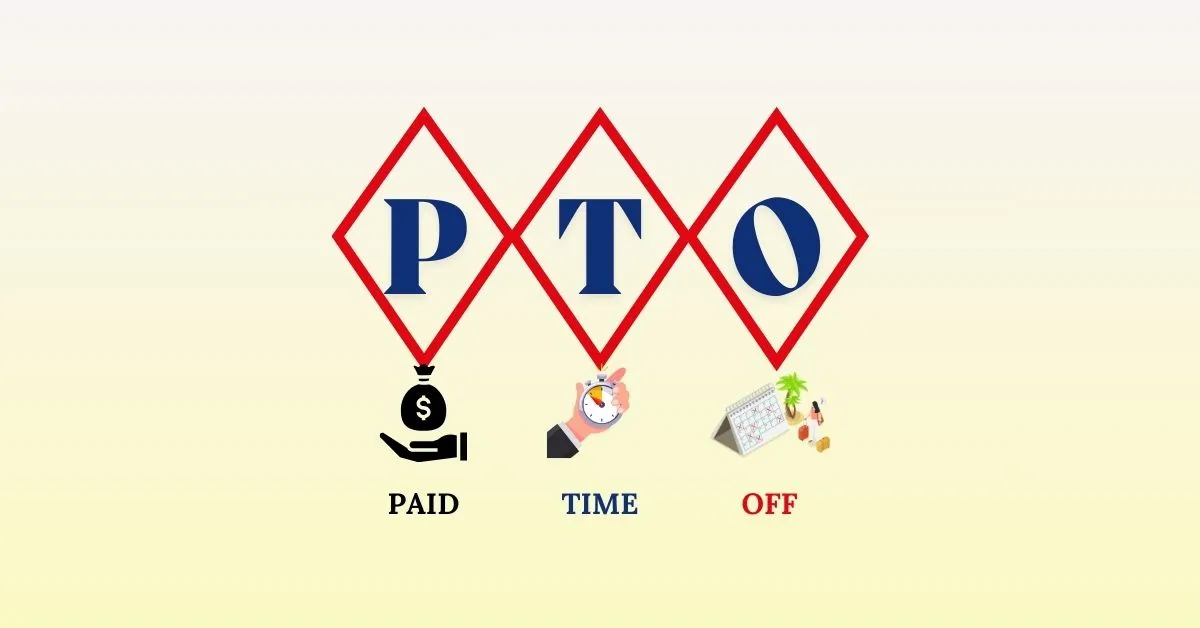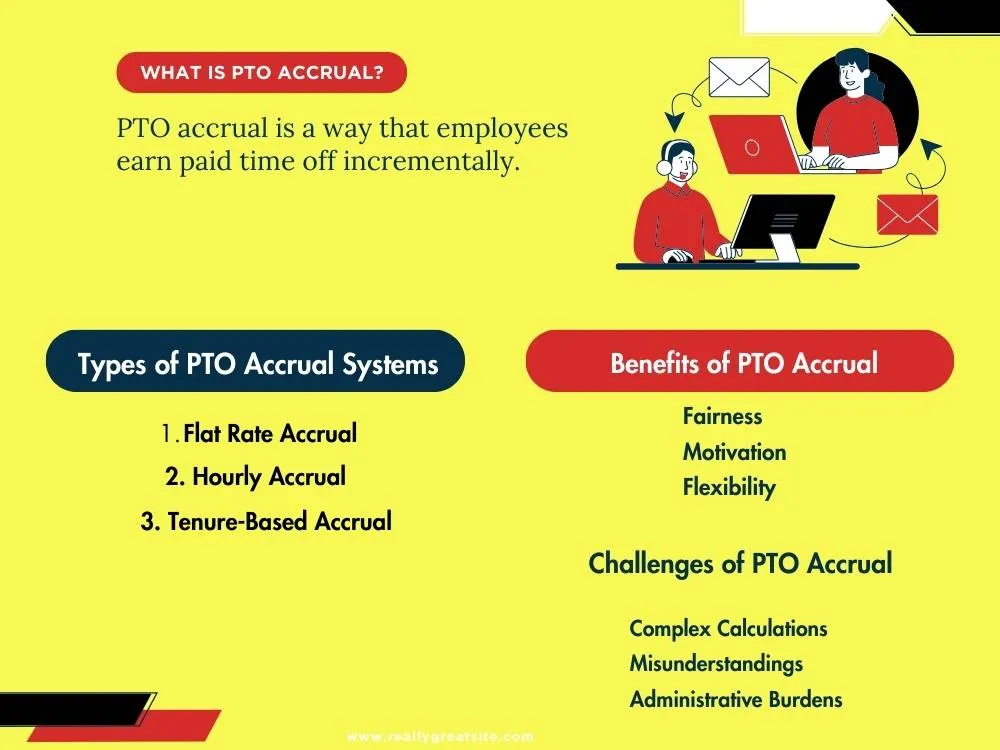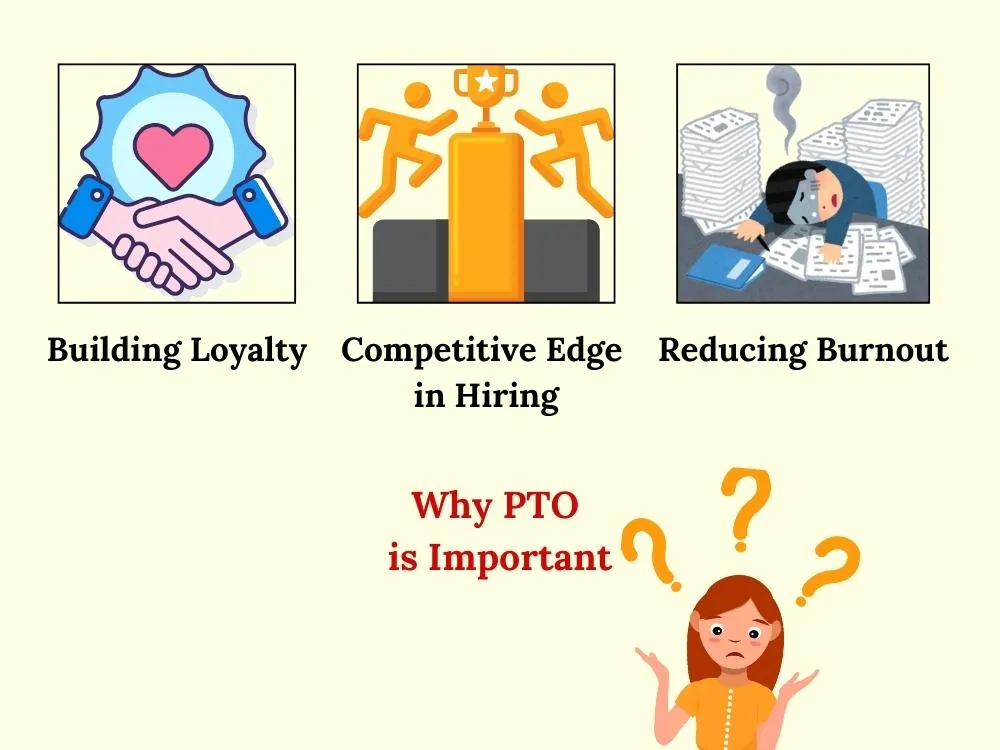
What is PTO and Why is it Essential for Employee Retention and Satisfaction
Organizations don't like higher employee turnover. So, they try their best to retain employees and attend to their needs. Numerous factors affect employee loyalty and happiness, and among them, Paid Time Off (PTO) stands out as a vital factor.
So, what exactly is PTO, and why does it remain important on the job? Let's explore these questions in this article and clearly understand how PTO impacts both employers and employees.
Key Takeaways
- Clearly understand what is PTO (Paid Time Off) and its types, importance for employee retention, satisfaction, and work-life balance.
- Understand PTO accrual, types, its benefits and challenges.
- Learn how PTO calculators help simplify calculating accruals with example.
- Know the importance of PTO for employee retention and satisfaction. Plus, understand the challenges in managing PTO and best practices.
- Check how AI tools help simplify PTO management and ensure fairness and efficiency.
Understanding PTO
PTO is as its name signifies, a paid time off. The particular time taken off from work is entitled to remuneration, unlike existing leave policies which distinguish vacation days from sick days and personal leave.
PTO is a single bucket where all of these classifications fall. It provides the employee ample chances to choose how to spend their days away from work.
Types of PTO:
- Vacation Days: Scheduled time off for personal rest, relaxation, or enjoyment.
- Sick Leave: Days when one is out of work for health-related issues or recovery.
- Personal Days: Days off used for running errands, family emergencies, or other personal things.
The Average PTO in the USA
The amount of PTO employees receive varies significantly depending on the company, industry, and tenure. Here’s a snapshot of the average PTO data in the USA:
| Tenure | Average PTO (Days) |
|---|---|
| 1 Year | 10-14 days |
| 5 Years | 15-19 days |
| 10+ Years | 20+ days |
Source: Bureau of Labor Statistics (BLS)
However, other countries like Germany and France mandate 20-30 days of PTO annually which is higher than the amount of days offered in the USA.
PTO Accrual: How Employees Earn Time Off
The PTO accrual is one of the most common ways to manage PTO where employees earn time off gradually. Plus, employees and managers should understand how this system works. This helps them plan PTO effectively.

What is PTO Accrual?
PTO accrual is a way that employees earn paid time off incrementally. This is based on their hours worked or length of service. Rather than using all the paid time off at the start of the year, employees accumulate it over time.
Types of PTO Accrual Systems
- Flat Rate Accrual:
The employee earns a fixed number of hours or days in PTO per period. For example, 1.25 days per month.- Example: An employee earns 15 days of PTO in a year. So, he/she would accrue 1.25 days per month.
- Hourly Accrual:
PTO is accrued based on the hours worked by the employees. For instance, every 20 hours worked, earns 1 hour of PTO.- Example: In case the employee works 40 hours per week, he/she will get 2 hours of PTO accrued every week with this particular accrual method.
- Tenure-Based Accrual:
This is based on the employee's tenure. Employees with longer service earn PTO at a higher rate than the new one.- Example: A company could give employees with 1 to 5 years on the job about 10 days of paid time off each year. Once they hit 6 years, that goes up to 15 days.
Benefits and Challenges of PTO Accrual
| Benefits of PTO Accrual | Challenges in PTO Accrual |
|---|---|
| Fairness: Aligns time-off benefits with the amount of work contributed. | Complex calculations can lead to confusion or errors if managed manually. |
| Motivation: Encourages employees to stay longer as they earn more time off with tenure. | Misunderstandings about accrual rules may frustrate employees. |
| Flexibility: Helps companies manage PTO balances predictably throughout the year. | Administrative burden if not automated or managed effectively. |
How PTO Calculators Help Simplify Accruals
A PTO calculator is super useful for both employees and employers when it comes to managing paid time off. It is useful for calculating accrued time or planning vacations. Also, a PTO calculator removes guesswork and ensures accurate tracking.
Why Use a PTO Calculator?
| For Employees | For Employers |
|---|---|
| Calculating PTO helps easily track how much PTO has been earned and how much remains. | Ensure compliance with company policies and labor laws. |
| To easily plan time off without exceeding balances. | Maintain transparency and fairness by offering accurate calculations |
Example Use Case
Let's assume an employee works 40 hours a week. He/She earns 1 hour of PTO for every 20 hours worked. By using a PTO calculator, you can easily figure out their earned balance over three months.
Calculation Example:
- Hours worked per week = 40
- PTO accrual rate = 1 hour per 20 hours worked
- Total weeks worked = 12 weeks
- Total PTO earned = (40 x 12) ÷ 20 = 24 hours of PTO
Why PTO Is Essential for Employee Retention

1. Building Loyalty
Employees tend to stay longer when they feel valued by their employer, and PTO fuels this type of feeling. It is indeed a compensating practice for the employee's hard work. Moreover, when employees take paid time off without financial worries, they are expected to be loyal to the company.
2. Reducing Burnout
PTO is an important aspect of reducing stress or burnout. Employees can renew their energy level before returning to work. Research shows that up to 25% lower turnover has been reported in organizations having strong PTO policies than in organizations with a more limited time-off policy.
3. Competitive Edge in Hiring
In industries, the competition for highly skilled employees is growing. So, companies with a good PTO policy attract top talents to their firm than other companies that have tight paid time off policies.
How PTO Boosts Employee Satisfaction

1. Improving Mental Health
PTO has a direct correlation with employees' mental health. Stress, anxiety, and depression can diminish with regular-refreshed breaks from the office. A 2022 survey from the American Psychological Association found that 68% of workers say they feel more productive after coming back from vacation.
2. Encouraging Work-Life Balance
PTO is great because it lets people take time off when they need to handle personal stuff or family matters, helping to keep work and life in check. This balance is vital for long-term job satisfaction. It also reduces the likelihood of employees seeking other job opportunities.
3. Enhancing Workplace Morale
When employees feel they can take time off without stress, it builds trust in the workplace. This trust leads to stronger relationships among team members and raises the overall spirit at work.
Challenges in Managing PTO
Apart from the benefits, there are certain challenges in managing PTO. Here are some common ones:
- Unequal Distribution: Some employees may overuse PTO which leaves others to pick up the slack.
- Seasonal Peaks: During holiday seasons, simultaneous PTO requests can disrupt company operations.
- Tracking and Approval: Manual tracking of PTO can lead to many errors or conflicts. This makes the process inefficient.
Best Practices for PTO Policies
It is critical for businesses to create effective PTO policies. It helps reap the full benefits of offering time off. Here are some best practices to consider:

1. Clear Guidelines
Establish clear and straightforward rules on how to request, approve, and use PTO. Provide this information in an employee handbook or portal.
2. Encourage Employees to Use PTO
Employers should encourage workers to take time off because it revitalizes their energy. So, employees feel supported in using their PTO and less likely to experience burnout.
3. Avoid “Use It or Lose It” Policies
This means some companies have “use it or lose it” policies" which cancels all PTOs at the year end when they are not taken. Instead of expiring unused PTO, companies should allow employees to roll over some or all of their balance to the next year. This helps build goodwill and reduces last-minute vacation requests at year-end.
4. Embrace Flexible or Unlimited PTO
Companies can embrace flexible or unlimited PTO which is really helpful to attract and retain staff. Employees should be encouraged to use the flexible PTO arrangements which helps avoid presenteeism.
How AI Tools Help with PTO Management
Technology plays an important role when it comes how businesses handle PTO. It makes things easier to balance employee needs and operational demands. Here’s how our AI tools can help:
1. Time Converter
Companies may face several challenges in managing PTO for international teams due to varying time zones. Therefore, they can use the Time Converter tool that simplifies this by helping managers and employees coordinate schedules and ensuring smooth operations even when team members are on leave.
Example Use Case:
- A global team plans a meeting while accounting for a colleague’s PTO in another time zone. The Time Converter ensures the meeting time respects everyone’s availability.
2. Probability Calculator
A Probability Calculator can analyze historical PTO trends to predict future time-off patterns. This helps managers prepare for staffing needs in advance.
Example Use Case:
- A business notices an uptick in PTO requests during the summer months. Using a Probability Calculator, they can forecast staffing requirements and avoid disruptions.
3. Average Calculator
An Average Calculator can determine the average PTO usage across departments or teams which ensures fairness and identifying patterns.
Example Use Case:
- HR calculates the average PTO days taken by each department to assess whether certain teams are overworked or underutilized.
Wrapping Up
PTO is a vital aspect for a better productive workplace. When organizations provide adequate paid time off to their employees, they can enhance workers staying and minimize turnovers. Plus, it is important for the employees to rest and recharge which enhance their satisfaction and ultimately drive better results.
Moreover, to stay competitive and efficient, companies must also leverage AI tools to streamline PTO management. These tools not only simplify administrative tasks but also ensure fairness and transparency.
FAQs
Q1: What does PTO stand for?
PTO means paid time off where employees are entitled to take leave and at the same time getting paid.
Q2: Can unused PTO be cashed out or rolled over?
It depends according to the company policy and local regulations. Some good companies roll over PTO for the next year or else cash out for the unused. On the flip side, some firms have the "use it or lose it" policies.
Q3: How does PTO affect part-time employees?
It doesn't have a major impact. Mostly part-time employees accrue PTO in the same rate as full-time workers. However, it is proportionated to the hours worked.
Q4: How does unlimited PTO work?
Unlimited PTO policy enables an employee to have as many days off as he/she wants with one rule. The employee should fulfill all his/her job obligations on time. Further, these policies require clear guidelines to ensure fairness and prevent misuse.
Explore Related Posts
https://smarttoolsai.com/post/how-many-work-days-in-a-year
https://smarttoolsai.com/post/1st-2nd-3rd-shift-hours
https://smarttoolsai.com/post/2-2-3-schedule-or-panama-schedule
.webp)